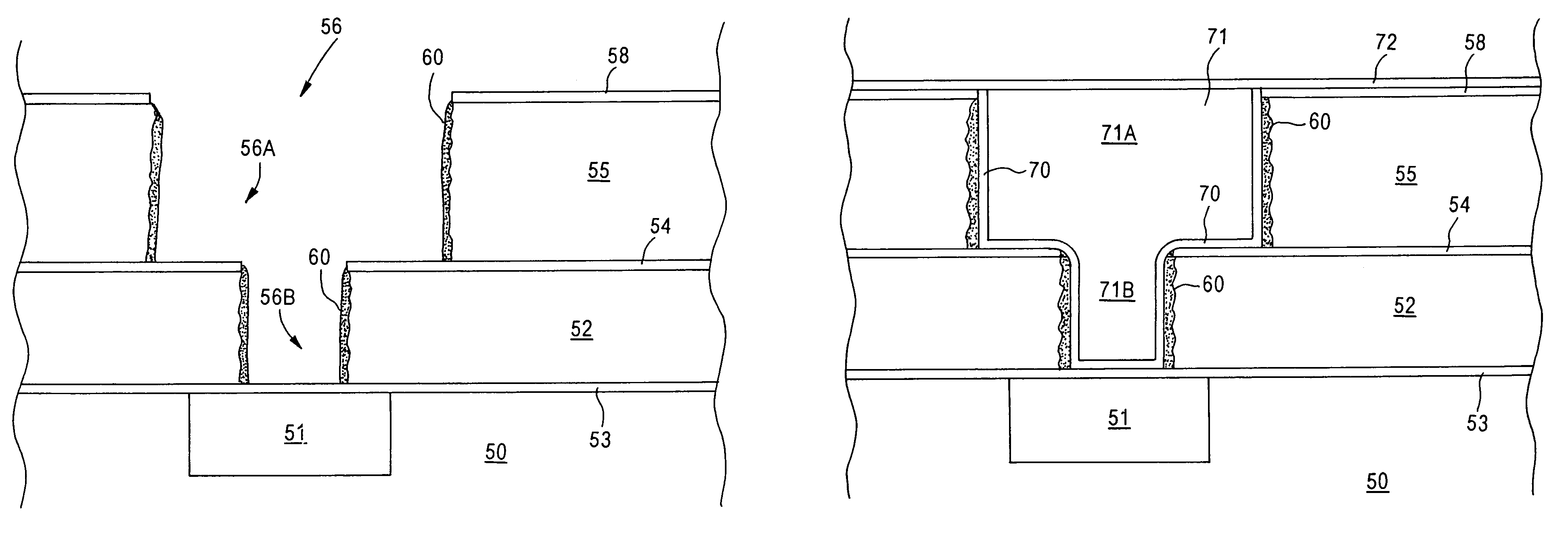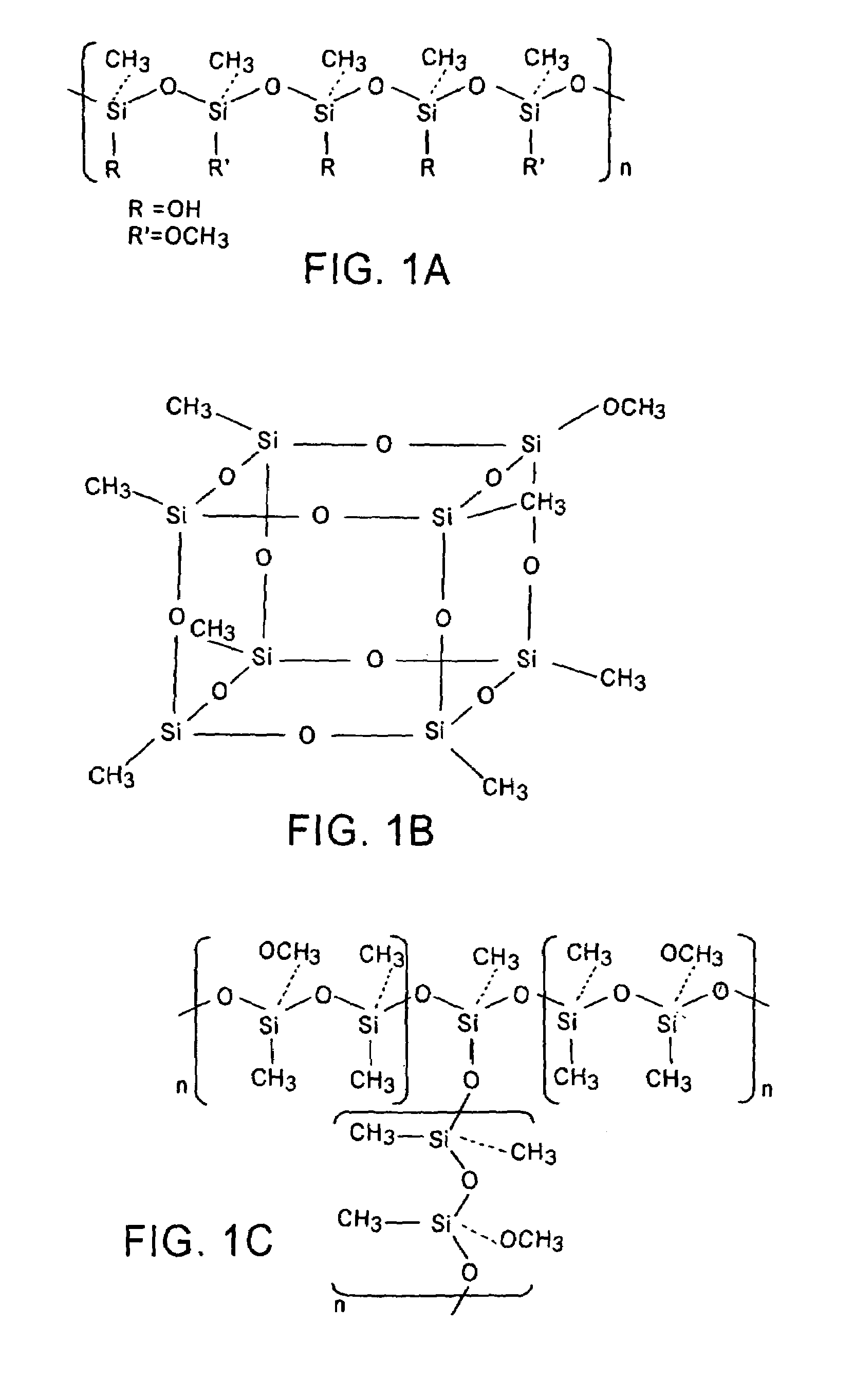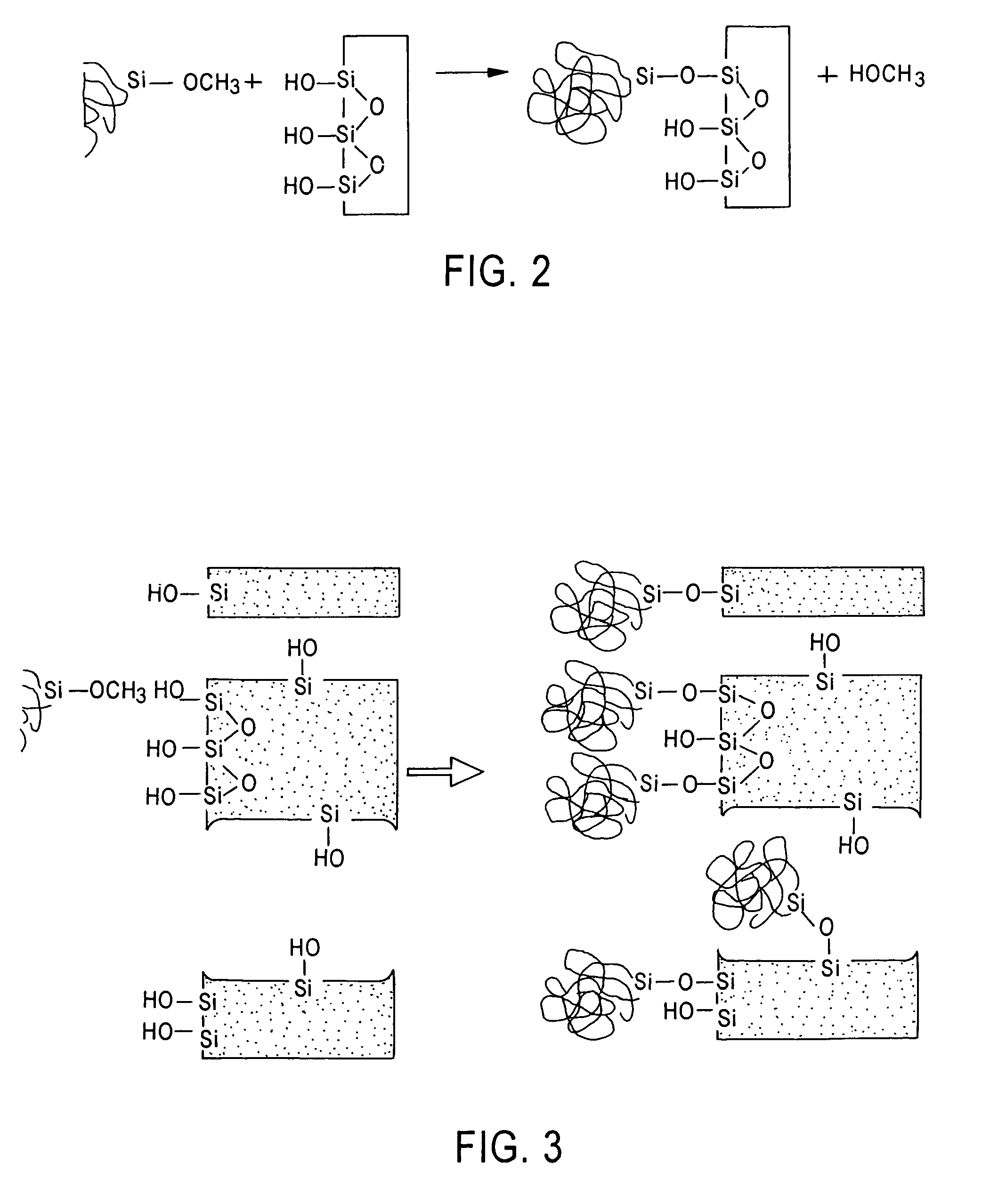Interconnects with a dielectric sealant layer
- Summary
- Abstract
- Description
- Claims
- Application Information
AI Technical Summary
Benefits of technology
Problems solved by technology
Method used
Image
Examples
Embodiment Construction
[0021]The present invention addresses the problem of barrier metal and / or barrier metal precursor penetration through sidewalls and into a low-k material during damascene processing, particularly porous low-k material. It was found that during CVD and ALD deposition of a thin conformal barrier metal layer, such as Ta and / or TaN, prior to the filling damascene openings with Cu or a Cu alloy, the barrier metal and / or precursor penetrated through the sidewalls of the low-k dielectric layer. Such penetration was particularly acute in implementing damascene processing employing porous low-k materials, such as porous low-k dielectric material having a dielectric constant (k) less than about 2.5. Such penetration into the low-k material causes leakage and capacitance degradation. This problem is not confined to porous low-k material, but may also occur with non-porous low-k material by diffusion of the barrier metal and / or barrier metal precursor through the exposed sidewalls into the low-...
PUM
 Login to View More
Login to View More Abstract
Description
Claims
Application Information
 Login to View More
Login to View More - R&D
- Intellectual Property
- Life Sciences
- Materials
- Tech Scout
- Unparalleled Data Quality
- Higher Quality Content
- 60% Fewer Hallucinations
Browse by: Latest US Patents, China's latest patents, Technical Efficacy Thesaurus, Application Domain, Technology Topic, Popular Technical Reports.
© 2025 PatSnap. All rights reserved.Legal|Privacy policy|Modern Slavery Act Transparency Statement|Sitemap|About US| Contact US: help@patsnap.com



